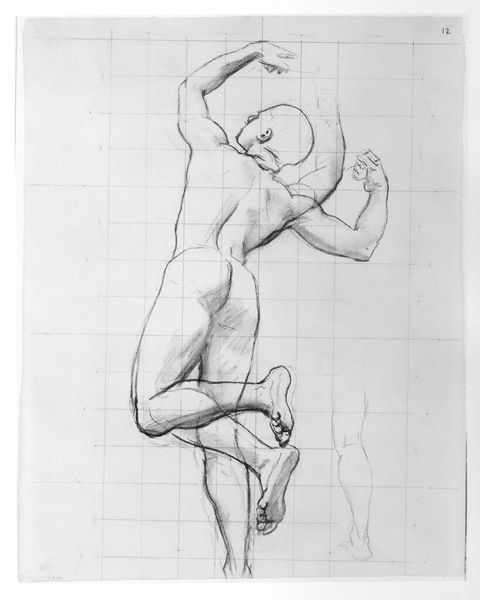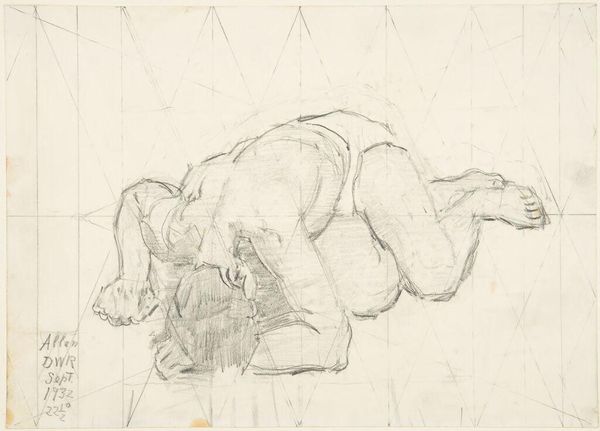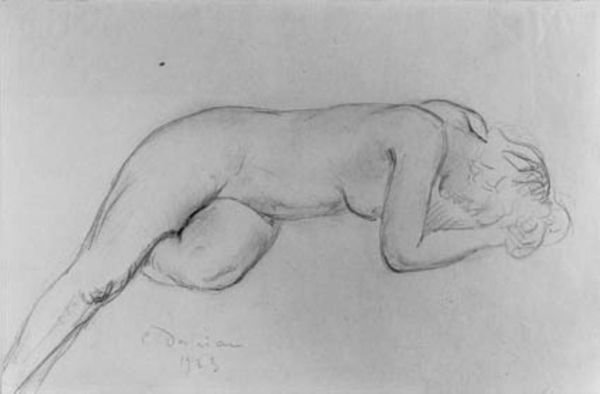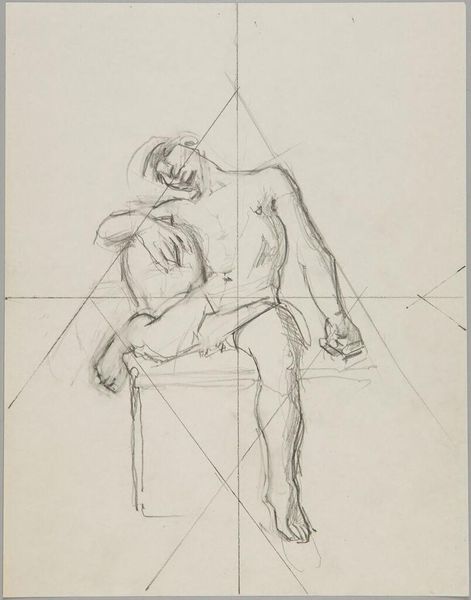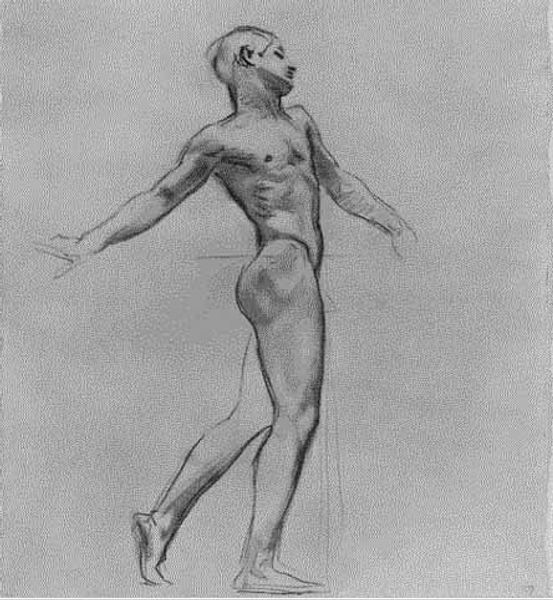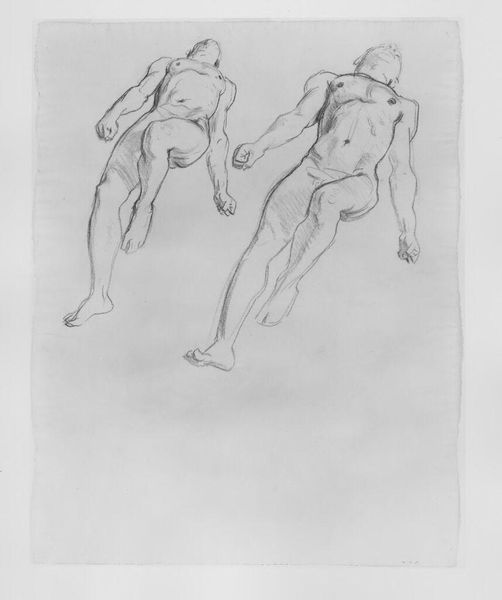
drawing, pencil, graphite
#
drawing
#
charcoal drawing
#
figuration
#
sketch
#
pencil
#
graphite
#
portrait drawing
#
nude
#
male-nude
Copyright: Public domain
Editor: We’re looking at John Singer Sargent’s "Drawing 6" from 1924, rendered in graphite and pencil. The figure contorts and twists in space; it makes me wonder what Sargent was aiming to capture here, what kind of message was he trying to get across in representing a nude male in this manner? Curator: What’s striking about this piece is Sargent's engagement with academic tradition while subtly subverting it. The male nude was, of course, a staple of art academies, representing ideal beauty and strength. But Sargent positions the figure in this drawing against a stark grid, almost as if measuring or dissecting the body, rather than celebrating its perfection. What does this suggest about the changing perception of the body, even masculinity itself, in the early 20th century? Editor: So, rather than presenting an idealized form, he's breaking it down? Does that imply that there's a questioning of these ideals and maybe even anxieties present? Curator: Precisely. This drawing may point to the growing influence of science and technology. It almost invites the viewer to analyze, objectify, and, in a way, control the very image that academic art held so sacred. Sargent isn't merely sketching; he's engaging in a silent discourse with the historical weight of figurative art, hinting at broader shifts in societal values and the increasing clinical view of the human form. Editor: I had never considered that. Seeing it as a cultural critique through representation is eye-opening. It adds another dimension beyond pure artistic skill. Curator: It really illuminates how the simple act of depicting the human body can be laden with social and historical meaning, making even a sketch a potent statement. Editor: I'll definitely keep that in mind next time I encounter a figure drawing; it enriches the whole viewing experience!
Comments
No comments
Be the first to comment and join the conversation on the ultimate creative platform.
